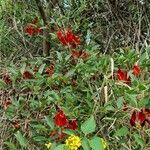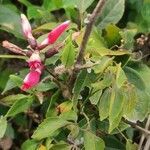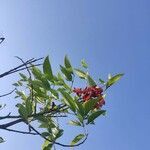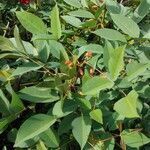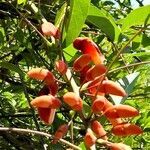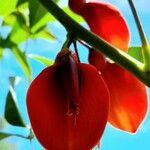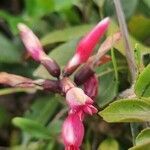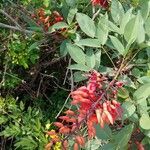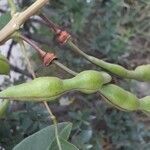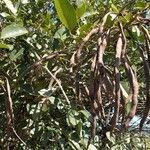Armed tree, leafy when flowering. Leaves with the leaflets elliptic or ovate, 5-8 cm long, 2-3 cm wide, chartaceous, puberulent but soon glabrous, the costa sometimes armed beneath. Inflorescence of flowers solitary or in 2's or 3's in the leaf axils, often subterminal; pedicels 1.2-6 cm long, pubescent with deciduous hairs; bracts linear lanceolate, 2.4-3 mm long; bracteoles somewhat smaller. Flowers with the calyx papery, broadly campanulate, 10-17 mm long, slightly shorter on the upper side, 10-15 mm wide at the mouth, the apex bilobed, pu-bescent in bud, soon glabrous; standard red, elliptic, sometimes broadly so, ca. 4 cm long, 2.1-2.6 cm wide, the wings variously shaped, sometimes toothed, 7-12 mm long, the keel petals falcate, 32-53 mm long; stamens 3.6-6.2 cm long, separate for 0.3-0.7 cm; pistil 3.4-6 cm long, the ovary densely pubescent, the stipe sparingly pubescent. Fruit woody, 14-39 cm long, 1.2-1.5 cm wide, slightly constricted between the seeds, the stipe 2-4 mm long, somewhat expanded up-wards, the acumen 0.7-1 cm long, slender but stiff; seeds black with dark mark-ings, 12-19 mm long, 5-8 mm wide, hard, smooth.
A tree. It grows 5-9 m tall. The flowers are red.
